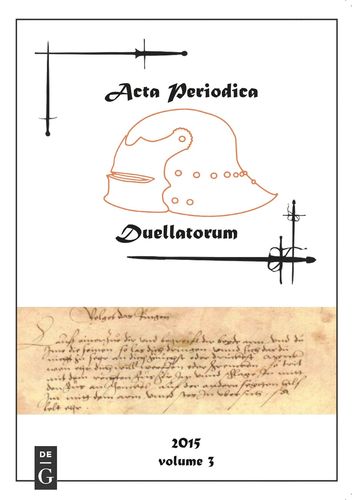The Roots of Fencing from the Twelfth to the Fourteenth Centuries in the French Language Area
DOI:
https://doi.org/10.36950/apd-2015-002Keywords:
fencing, France, twelfth century, thirteenth centuryAbstract
This article offers a partial overview on fencing, as recognized through archive records, as well as French epics and romances from the twelfth to the early fourteenth century. In the twelfth century, fencing was only attested through knightly vocabulary as a way to describe actions performed during single combats involving a combination of shield and another weapon, most commonly a sword. Fencing was progressively dissociated from the knightly arts and there were even few mentions of its use by common people. There are archive records from the thirteenth century of individuals bearing the nickname “fencer”, although there is rarely enough context to be certain that they were really practicing the art. At the end of the thirteenth century, archives and narrative fiction show an established fashion for a certain form of fencing with a short round shield, the buckler. This is clearly established in London where surviving manuscripts include many regulations on fencing, however the fashion was also spread in the continent, even though it seems to be less documented.Downloads
Download data is not yet available.
Downloads
Published
2015-09-19
Issue
Section
Articles
License
Copyright (c) 2015 Olivier Dupuis

This work is licensed under a Creative Commons Attribution-NonCommercial-NoDerivatives 4.0 International License.
How to Cite
Dupuis, O. (2015). The Roots of Fencing from the Twelfth to the Fourteenth Centuries in the French Language Area. Acta Periodica Duellatorum, 3(1), 37–62. https://doi.org/10.36950/apd-2015-002



